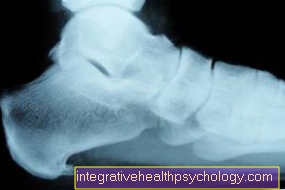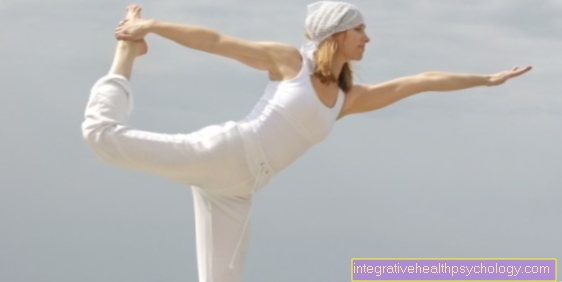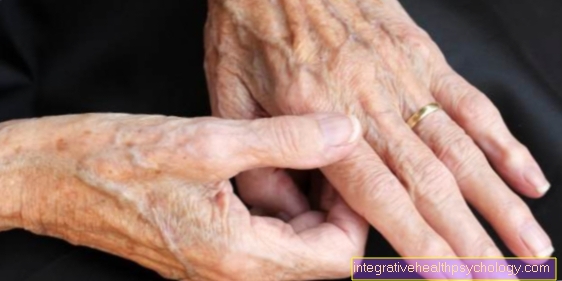Fitness economist
What is a fitness economist?
A fitness economist is a person who has completed a degree in fitness economics (mostly dual). These are people who have turned their passion for sports into a profession.
The fitness economist often works in a fitness studio and is therefore in the area of sport and health. In addition to business management activities, the fitness economist leads health and fitness courses in which he conducts vitality tests, creates training plans in the areas of strength, endurance, flexibility and coordination, advises people on health-oriented nutrition and supports athletes.
The business field of activity relates to the commercial management of a fitness facility or a health company, including personnel management.
Read more on the subject at: fitness

Where can you study something like that?
The fitness economics course is also often referred to as applied training science. It is often offered at private universities or institutes, which is why applicants usually do not require a specific grade point average in the school leaving certificate. The course can, for example, be studied as a dual study at the German University for Health and Sport with locations in Berlin, Ismaning and Unna. Another training facility that offers this dual course of study is the IST University for Management in Frankfurt am Main, Weil am Rhein, Munich, Berlin, Düsseldorf and Hamburg. The German University for Prevention and Health Management in Saarbrücken also offers this course, as does the Deggendorf Technical University in Deggendorf and Pfarrkirchen. Another possibility to learn the profession of fitness economist is offered by the German Sport University in Cologne and the Bodensee Campus in Konstanz.
You can read more information about the topic here: Movement theory
Can you also study dual fitness economics?
The degree in fitness economics is often offered as a dual degree. The course accordingly consists of a combination of in-company training and distance learning, which requires little attendance by the students. After six to seven semesters, the dual course of study is completed with a Bachelor of Arts. In order to be able to study fitness economics as a dual study, you have to have a high school diploma and also a training contract with a health or fitness company in which you work or a secondary school diploma with several years of professional experience in the fitness and health sector. In addition to normal work on the weekend or after work, you have to study for your studies.
You may also find our next article interesting: Metabolic analysis - what is it?
Is that also possible as distance learning?
In addition to full-time and dual studies, it is also possible to learn the profession of fitness economist through distance learning. Distance learning is particularly interesting for people who want to study alongside their job and who do not have the opportunity to study full-time. With this type of study, most of the theoretical basics must be worked out and learned independently; online media are available. Events that require attendance are only held a few days a year.
How long is such a degree?
The degree in fitness economics usually lasts six to seven semesters, i.e. at least three years, and ends with the completion of the Bachelor of Arts. It is then possible to do a master’s degree in a related subject. After two to four semesters, you finish the master’s degree with a Master of Arts degree. The duration of a distance learning course can vary or be shorter.
Read more about the topic at this point: Health care
In which areas are fitness economists used?
A fitness economist has a wide-ranging and interdisciplinary degree behind him, which is why he can be used in a variety of ways after completing his training and has very different career opportunities. During your studies you can choose areas of focus that will also be reflected in your later professional life, including, for example, managerial positions in fitness clubs, health and wellness centers, sports clubs and rehabilitation facilities. In addition to the commercial focus, such a position also includes the task of personnel management.
Another possible application of a fitness economist is the area of the fitness trainer. The fitness economist can become self-employed and work as a freelance trainer or personal coach. Fitness economists also work in rehabilitation facilities, where they lead sports groups that consist of preventive training units. Health centers, fitness and leisure facilities, health centers, club hotels and sports hotels also often employ a fitness economist, who leads sports groups and courses, creates individual training plans or provides advice to customers.
In addition, a fitness economist can give nutritional advice and recommendations there in order to give the athlete holistic advice. Manufacturers of fitness products, which fitness economists need to develop and market sports products, represent another possible application.
You might also be interested in this topic: Exercise science
How are the vacancies?
In most cases, the degree in fitness economics is offered on a dual basis; a training position in a company, often in a fitness studio, is usually easy to find, as long as you are not too tied to a particular location. Job offers in the field of fitness economics are always open, as the fitness industry is currently booming and more and more health and fitness centers are opening. If you specialize in a certain area, it can be a bit more difficult with a suitable job, but should also be within the scope of a nationwide application.
What salary can I expect later?
The size of the salary of a fitness economist depends on a wide variety of factors and is difficult to generalize. For example, additional qualifications can play a decisive role, as can the fact whether you have a bachelor's or master's degree. People with a Masters degree can try to negotiate a higher salary. It is also possible that a large fitness company pays a higher salary than a medium-sized company. Accordingly, if you are aiming for the highest possible salary, you should not be tied to a particular location and apply nationwide for vacancies. As a salaried young professional, the salary is significantly lower than that of an owner of a fitness company or of a fitness economist in a management position. All in all, however, you can expect a gross salary of at least 2000 euros per month.
This topic could also be of interest to you: Ideal norms of training science
What are the future chances of a fitness economist?
The fitness and health industry is currently very popular, which is reflected in the high membership of the fitness studios. This means that there are many vacancies for a fitness economist. This results from the fact that, due to the large number of fitness studios, more and more facilities specialize in certain client groups in order to differentiate themselves from other facilities and so they also need staff who can meet these requirements.
Another very positive aspect is the wide range of possible uses of a fitness economist, which is why this profession is future-proof, as long as the employee is flexible and adapts to the vacant position.





























